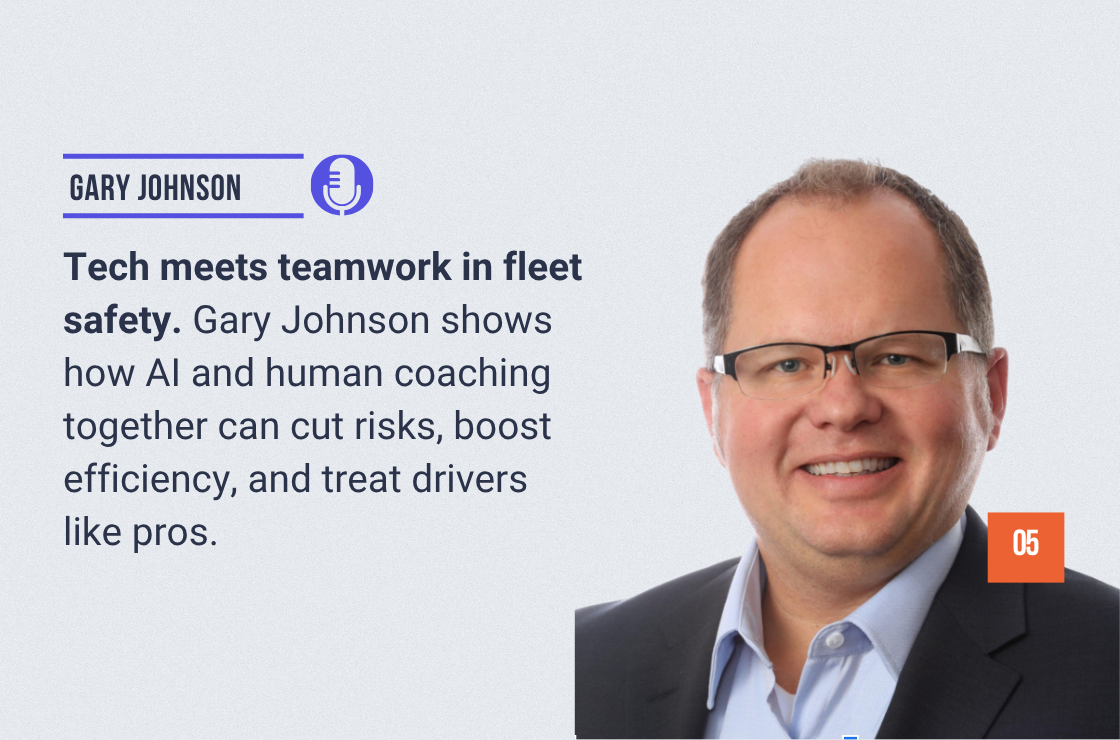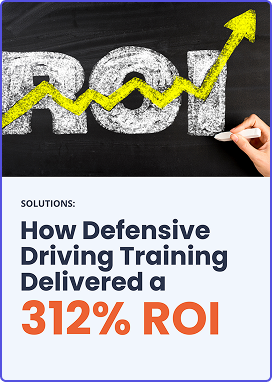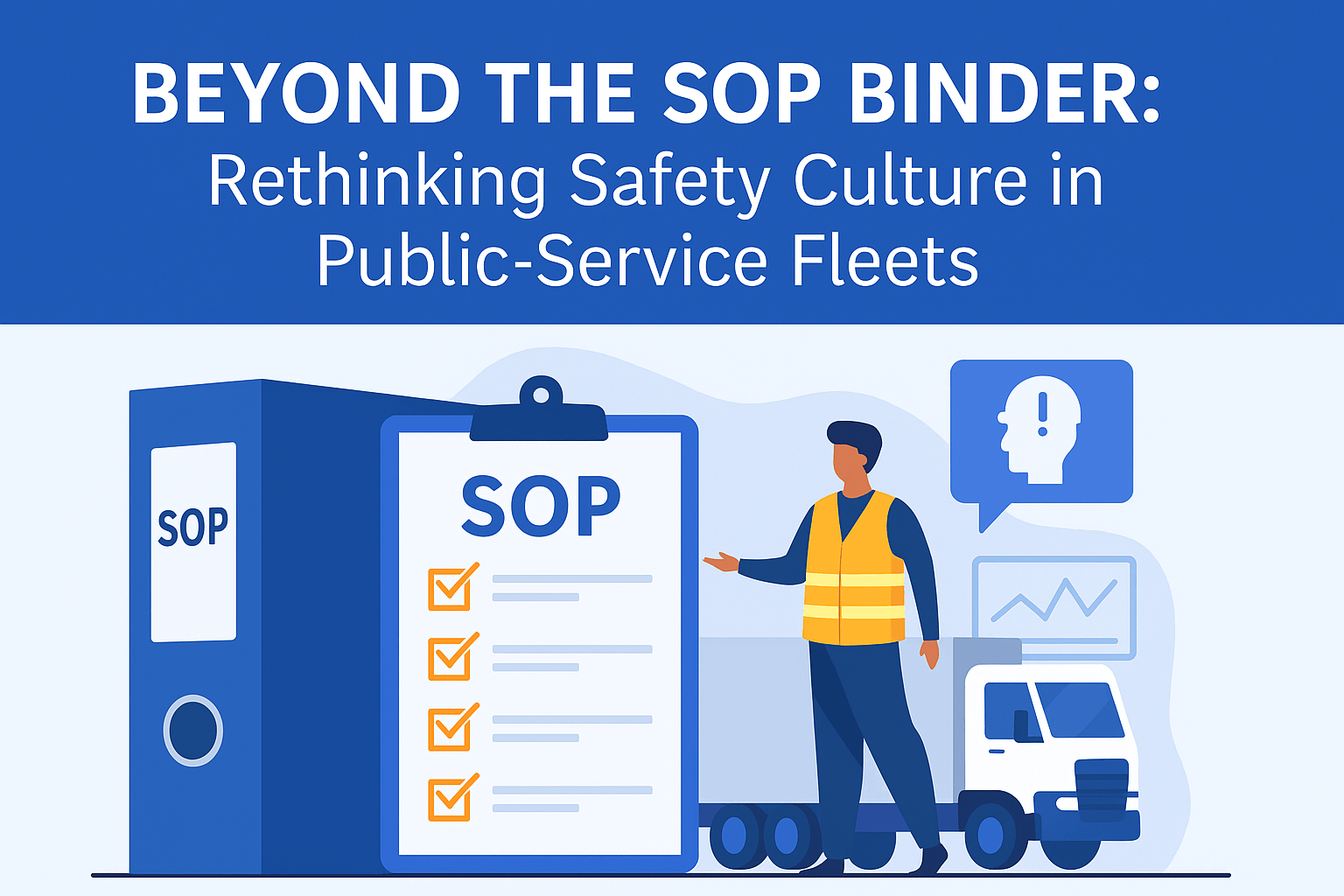
| Gary Johnson is the Head of Safety and Compliance Strategy at Motive, a technology company that develops AI-powered applications to improve the safety, productivity, and profitability of businesses across various industries. With over 40 years of experience in the transportation industry, he has held leadership roles in safety and compliance at companies such as Ryder Systems Inc., FedEx, and Transport Corporation of America. Before joining Motive in January 2023, Gary spent eight years at Lytx, focusing on safety and compliance. He is a Certified Director of Safety (CDS) and has presented at various industry events and forums. |
Here’s a glimpse of what you’ll learn:
- [2:26] How Gary Johnson’s unexpected career path led him into the fleet safety and compliance arena
- [8:41] Common mistakes companies make when implementing driver safety programs
- [13:21] Why a proactive approach to safety is more effective than reactive policies
- [16:14] The role of technology in coaching drivers like professional athletes
- [26:13] The power of AI in fleet management and how it’s transforming safety programs
- [31:32] Overcoming the fear of data overload and using KPIs effectively
- [34:55] Addressing unsafe driver behaviors and the “Now What?” moment in coaching
- [39:47] Balancing technology with the human element to build a strong safety culture
In this episode…
Fleet safety isn’t just about following rules; it’s about creating a culture that prioritizes proactive risk management. But with so many moving parts, from driver training to compliance regulations, how can companies ensure their fleet operates as safely and efficiently as possible? What role does technology play in shaping a stronger safety program?
According to Gary Johnson, a veteran in fleet safety and compliance, companies often mistake compliance for true safety. He highlights that while meeting regulatory standards is necessary, a truly effective safety program goes beyond checklists and focuses on behavioral coaching. By leveraging AI-driven insights and real-time data, fleets can shift from a reactive approach to a proactive one, addressing risks before they become costly incidents. Gary also emphasizes the importance of treating drivers like professional athletes — giving them the right tools, coaching, and feedback to continuously improve their performance.
In this episode of Roadrageous, hosts Liam Hoch and Chad Lindholm sit down with Gary Johnson, Head of Safety and Compliance Strategy at Motive, to discuss how fleets can build a smarter, more effective safety strategy. They explore the shift from reactive to proactive safety programs, how AI-powered technology is transforming fleet management, and why data should be used as a coaching tool rather than a disciplinary measure.
Quotable Moments:
- “So many times, companies think compliance equals safety, but real safety comes from proactive risk management.”
- “Technology should be used to coach and improve drivers, not just as a tool for discipline.”
- “The most valuable asset in any organization isn’t technology or trucks — it’s the people behind the wheel.”
- “AI can instantly identify risky behaviors, giving drivers a chance to correct them in real time.”
- “A strong safety culture isn’t about policies on the wall; it’s about how you actually operate.”
Action Steps:
- Shift from reactive to proactive safety programs: Anticipating risks before they become incidents leads to fewer accidents and a safer fleet overall.
- Use AI-driven insights for driver coaching: Providing real-time feedback helps drivers improve performance without relying solely on post-incident discipline.
- Treat drivers like professional athletes: Continuous training, coaching, and performance reviews create a culture of safety and skill enhancement.
- Balance technology with human leadership: Combining data-driven insights with a strong safety culture ensures both compliance and driver well-being.
- Focus on behavior, not just compliance: True fleet safety goes beyond regulations by addressing habits and reinforcing positive driving behaviors.
Data, Ecosystems, and Fountain Soda: Gary Johnson on the Human Side of Fleet Safety
Gary Johnson, a veteran with nearly 40 years in the transportation industry and Head of Safety and Compliance Strategy at Motive, joined Liam and Chad on Roadrageous to discuss the evolving landscape of fleet safety. His insights spanned decades of experience, from pre-technology days to the age of AI, emphasizing the crucial role of the human element in a data-driven world.
A Serendipitous Journey: From Banking Aspirations to Safety Leadership
Like many in the industry, Gary’s path wasn’t planned. A finance degree led to an accounting internship at Ryder, which unexpectedly transitioned into a safety role. This twist of fate ignited a passion that has fueled his career for four decades.
Beyond Compliance: Proactive Safety and the Human Factor
Gary highlighted a critical mistake many companies still make: equating compliance with safety. He stressed the importance of proactive approaches, focusing on behaviors, and empowering people. “The most valuable asset in any organization is the people,” he asserted.
Technology as a Coaching Tool: From Reactive to Proactive
Gary compared the use of technology in fleet safety to professional sports, where athletes use data and film to improve performance. He advocated for a coaching mindset, using technology to guide drivers towards continuous improvement rather than solely for disciplinary purposes.
The Power of AI: Transforming Safety Programs
Artificial intelligence, while a buzzword, is revolutionizing safety programs. Gary cautioned against companies claiming AI capabilities without delivering, emphasizing the need for due diligence. He discussed how AI enables real-time feedback and intervention, moving from reactive to proactive safety management.
Data Management: The Crawl, Walk, Run Approach
Gary addressed the fear of data overload, recommending a “crawl, walk, run” approach. Start small, focusing on key performance indicators (KPIs), and gradually expand as your program matures.
The Safety Ecosystem: Human, Machine, and Environment
Gary introduced the concept of the safety ecosystem, a balance between the human, the machine, and the environment. He emphasized the importance of understanding and addressing the human element, recognizing that “mind off road” is a significant distraction.
The Human Touch: Connecting with Drivers
Gary stressed the importance of building relationships with drivers, knowing their needs, and providing support. He advocated for a leadership style that prioritizes human connection over data analysis.
Rapid Fire Fun: Pineapple on Pizza and Fountain Soda
Gary revealed his strong stance against pineapple on pizza, his belief that a hot dog is in a category of its own, and his love for fountain soda during long drives.
Key Takeaways:
- Safety is more than compliance; it’s about behaviors and people.
- Technology should be used as a coaching tool, not solely for discipline.
- AI has the potential to transform safety programs, but due diligence is crucial.
- Data management requires a strategic approach; start small and build.
- The human element is essential for a balanced safety ecosystem.
- Connecting with drivers on a personal level fosters a positive safety culture.
Gary Johnson’s insights underscored the importance of balancing technology with human connection to create a truly effective safety program.
Conclusion
Gary Johnson on Roadrageous emphasizes that true fleet safety transcends compliance. It’s about proactive risk management through behavioral coaching, leveraging AI and data for driver improvement, not just discipline. He advocates for a shift from reactive to proactive safety, treating drivers as professionals with continuous coaching and support.







